The Big Question
Heuristic reviews can be a powerful—and, more importantly, fast and cheap—method of validating design decisions, especially when compared against the time required to run proper usability tests.
But when most of a Design team, along with the small number of Researchers, is unfamiliar with heuristic reviews, what do you do?
Create a template and train your teams.
Context
The Template
Why ask your team to create a wheel they are unfamiliar with when you know how the spokes and hubs go together?
I inherited a small UX Research team whose primary activity was partnering with Design to conduct usability testing… even when usability testing may not have been the best course of action.
Embracing a lean approach to our work, there were often times when a quick expert review would provide the valuable feedback a designer needed without the time and expense of a full usability test—even guerilla style quick and dirty ones.
I created a standard template for my researchers and our product design partners to use.
Example Heuristic Review Slides
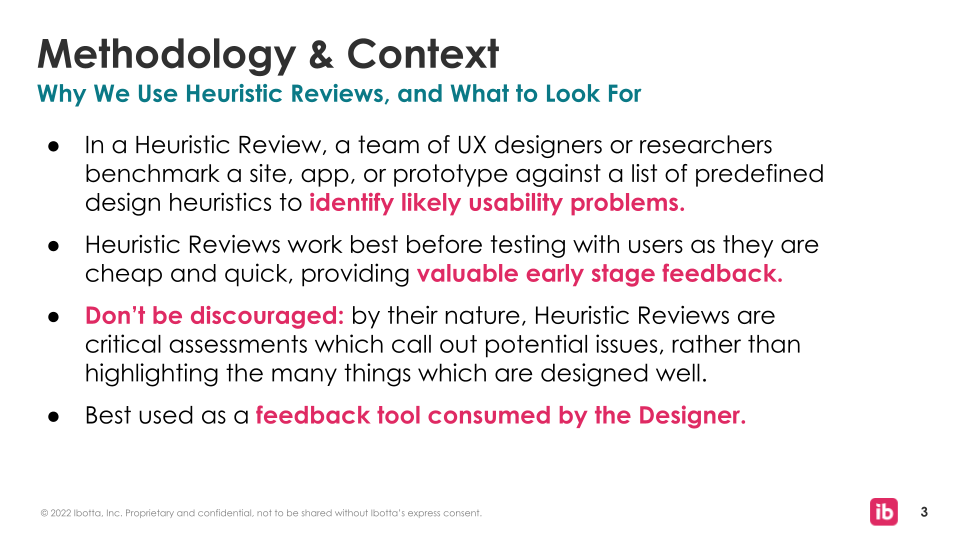
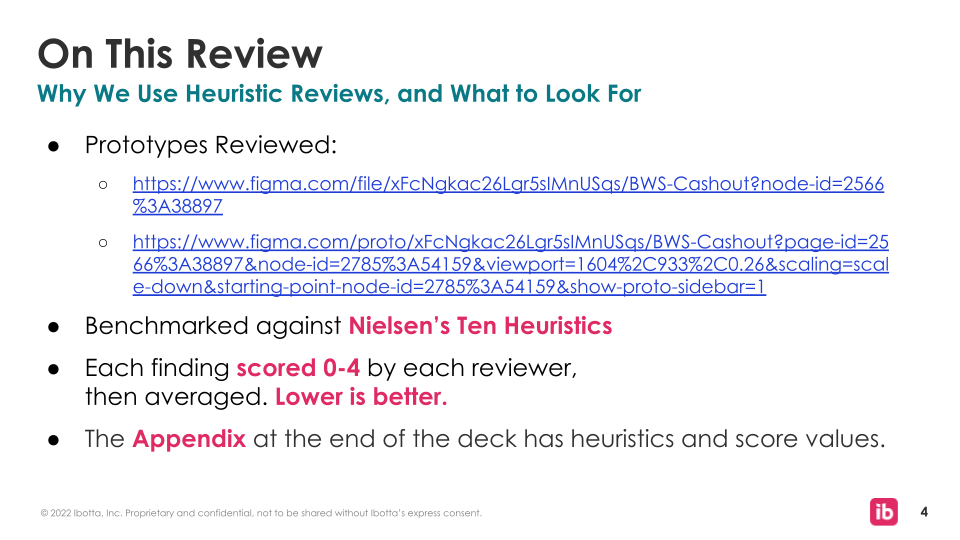
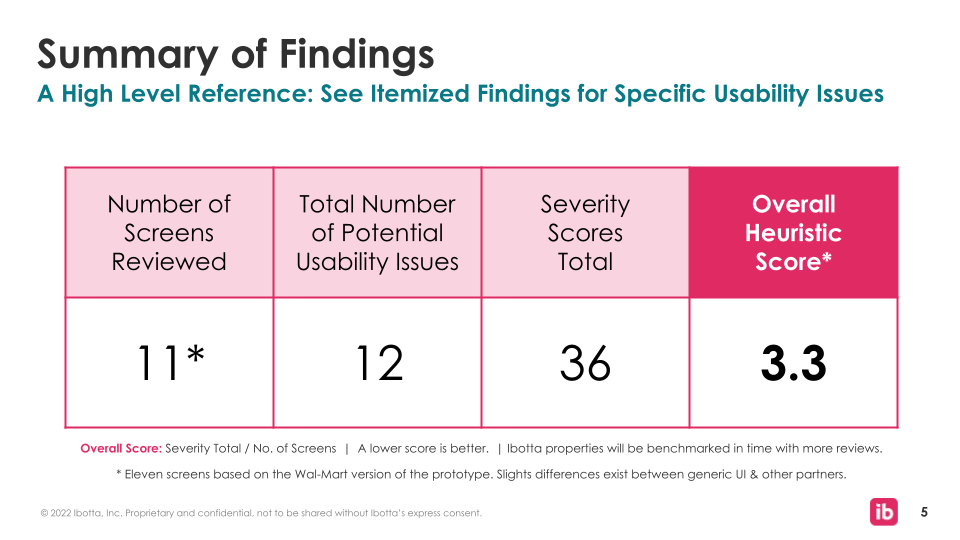
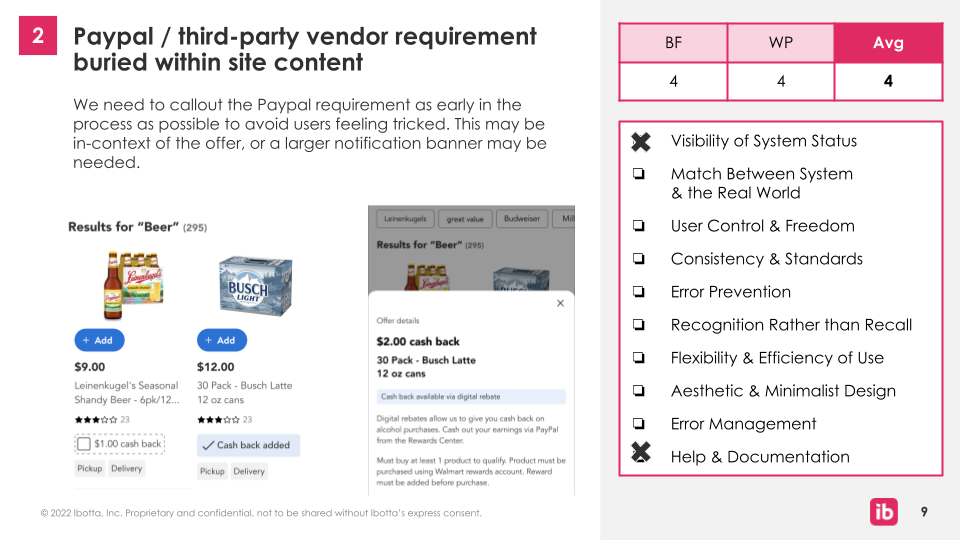
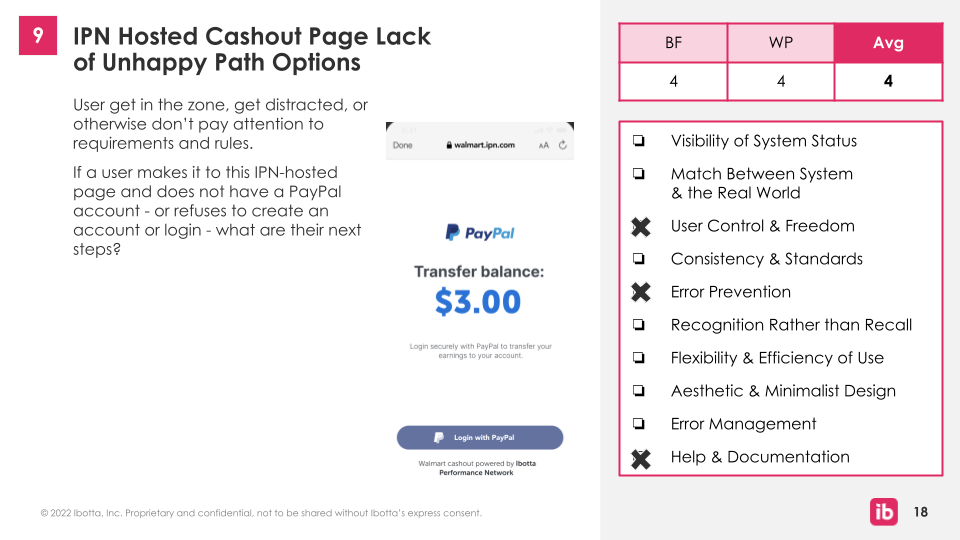
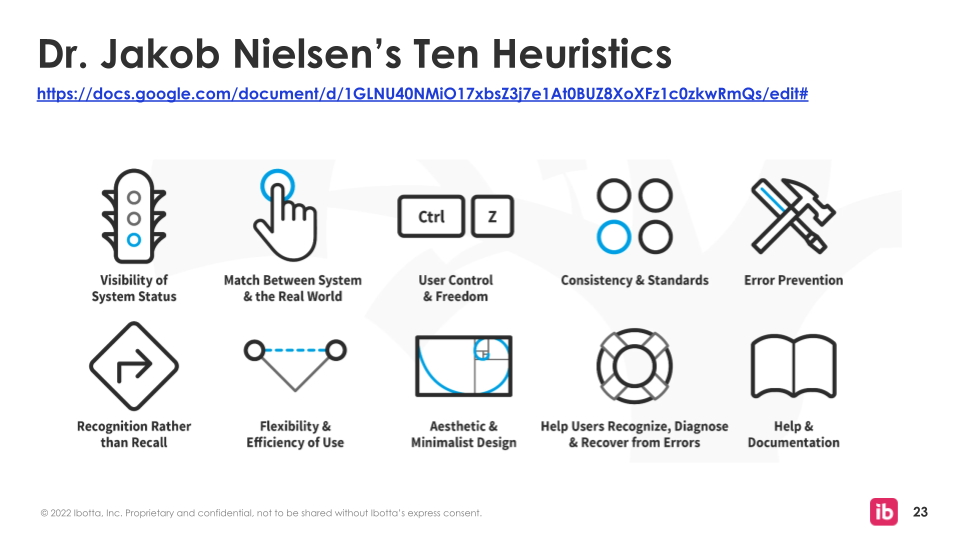
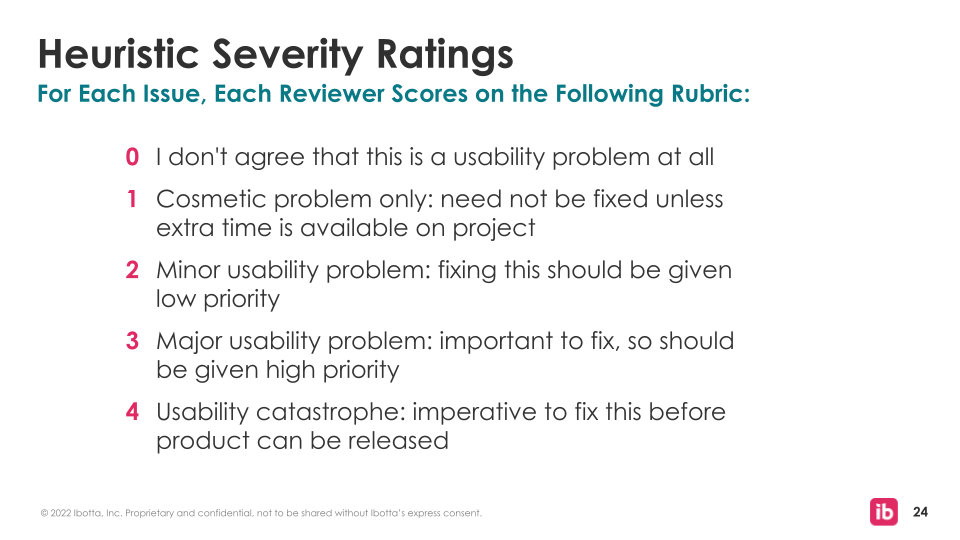
Training & Outcome
With the template created, I created a presentation deck and gathered industry references and guidance to train the Research, Design, and Product teams about heuristic reviews: when to conduct them (i.e. over usability tests), how to conduct them, and what to do about the results of such a review (as quick-turnaround feedback for designers or as items for a product manager to include in a backlog).
This training was held across several remote MS Teams sessions, with me personally providing input and encouragement for the teams as they began to conduct heuristic reviews on their own.
Best Practices Document
As part of the training, I wrote and shared a best practices document to go with the template. When combined with the coaching, researchers and designers would have all they need to start running heuristic reviews of their own.
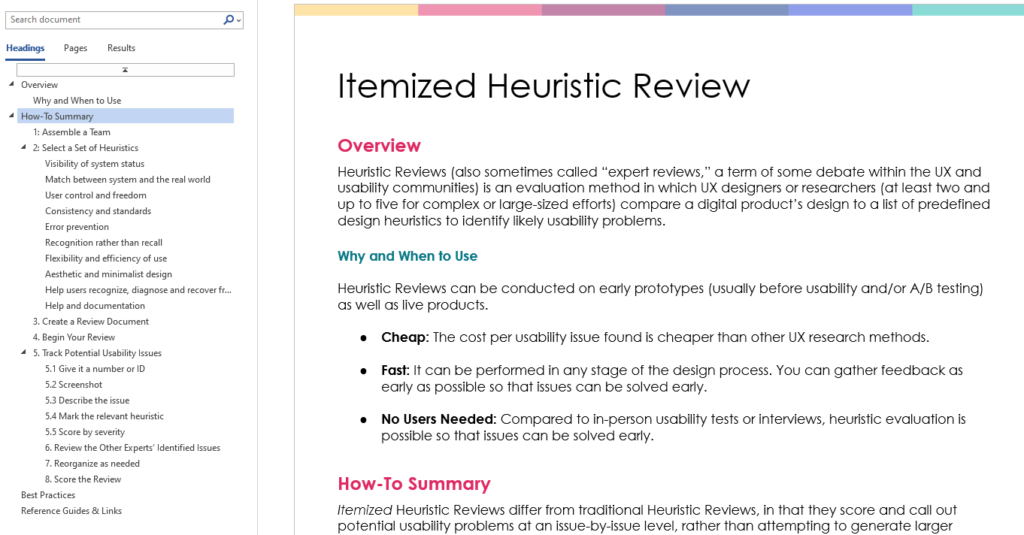
Outcomes
Two key outcomes became apparent with the introduction of heuristic reviews into the playbook of our research and design teams:
- Designers were able to more quickly get feedback on their early designs, catching the most important and egregious usability issues before they were ever able to trip up actual users.
- Researchers gained a small amount of bandwidth back, freeing them up to focus on additional, more strategic efforts, when before they were conducting usability tests for most small mockups and early phase design explorations.
